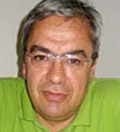“They always ask whether we are late or not. Of course, we are late because Armenia was the last among the former Soviet Union states that started to circulat its own monetary unit – the AMD in 1993,” on Saturday said the former CB chairman Bagrat Asatryan during the ceremony dedicated to the 15th anniversary of the AMD organized at the Yerevan State University. He tried to simply explain why 1 Soviet ruble was exchanged into 200 AMD and why it was so devaluated. According to him there are two important reasons for that. The first reason is that Russia is still retaining its emperor’s ambitions and Armenia was at hard war at Karabakh in 1993. It means that this was also an issue of inter-state relations with Russia, which was supporting us. According to Asatryan the second reason was purely economic. “Armenia and a number of other countries were supposing that it will be possible to resolve economic issues if they appeared in a larger area of money. Moreover, if in 1992 these intentions were conditionally said honest then 1993 became a mutual year in terms of monetary policy. Such tools were born, which the theory of economics cannot explain. Such a phrase was created – credit emission,” said Asatryan and added that the author of the collapse of the ruble zone was Russia, which on its own exited the ruble zone without consenting it with the partner states. Thus it created its own monetary unit. After that the government of Armenia intended to resolve the issue of the AMD circulation. “By the secret decision of the security council a committee was established, which should have been in charge of increasing the AMD circulation and raising the value of the AMD. The committee was represented by three persons – CB chairman Isahak Isahakyan, minister of finances Levon Barkhudaryan and current prime minister Tigran Sargsyan. I had already received the suggestion of the president of the republic to submit the position of the CB chairman. It was decided that after the circulation of the AMD my candidature will be presented to the discussion of the Supreme Council,” said Asatryan. According to him a principle was adopted, based on which everyone could exchange their savings. “The results were sad because it was calculated that in Armenia there was 90-95 billion rubles in circulation. However 120 billion was submitted for exchange. It was the result of the mentioned credit emission and the consequence of the fact that Armenia was the last to refuse the Soviet ruble zone,” said Asatryan. As of the exchange rate of AMD-Ruble “then I think that we all understand that there is no difference whether it is 1-100 or 1-200. This was the advice of the IMF specialists as well. Let me remind that 1993 was also a complicated year in terms of inflation. We have nearly 10.000% inflation. It means that when we were deciding to print our monetary unit we were in a totally different field. Even if this 200 was 500 we would definitely lose it.” When speaking of the determined 1-14.5 rate between the USD and AMD he mentioned that back in past a technical decision was made regarding the issue. “The ruble circulating in our region has formed a certain rate to the USD. I remember that t the beginning of November 1 dollar was worth 2200 rubles. And based on the quick devaluation of the ruble there was an assumption that the rate would reach 2900 per USD. And as the volume of the printed AMD was so much we had to define the rate 1-200. As a result of our calculations we defined 14.5 AMD per USD. Our decision about the currency rate exchange is more important. It is obvious that at the beginning the government should have conducted a policy of a fixed rate so that the society would recognize the money. First I remember the volume of our reserve funds, which we had in Armenia. It was approximately 500-550 thousand USD. We didn’t have much fund at all. I remember that certain reserves of butter and oil were created, which should have been sold and the AMD stability should have been protected through that method. This policy maintained for only a week and then we entered the policy of a regulating currency and by the end of December the AMD was devaluated about 5 times. After this it was obvious that we cannot speak about any policy besides the floating rate. Starting from January the AMD was enabled to freely float, which is still maintained,” said Asatryan.

